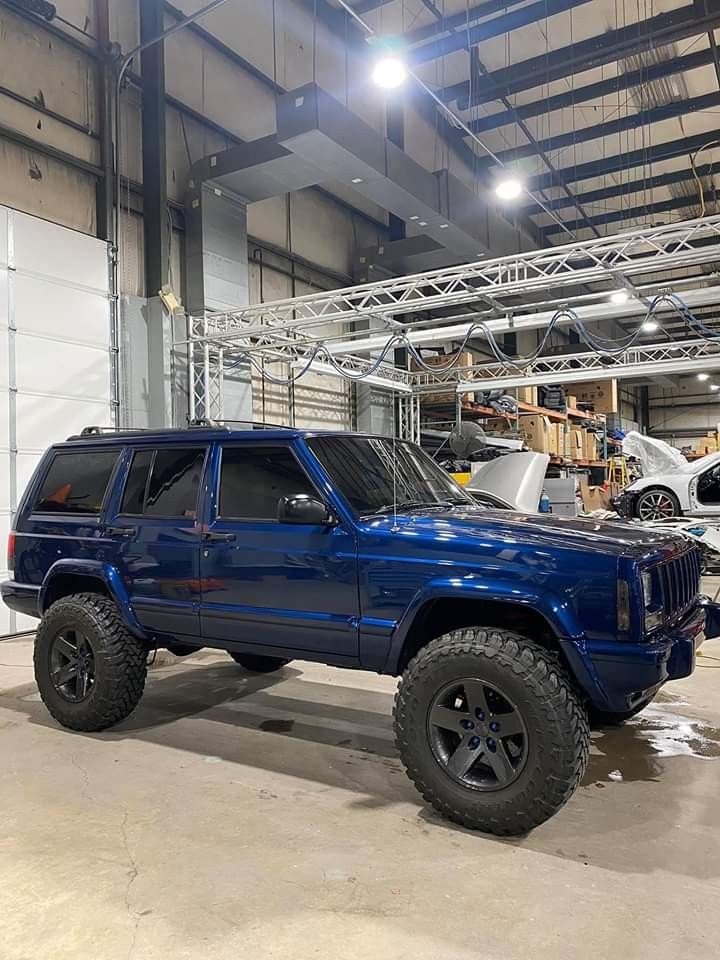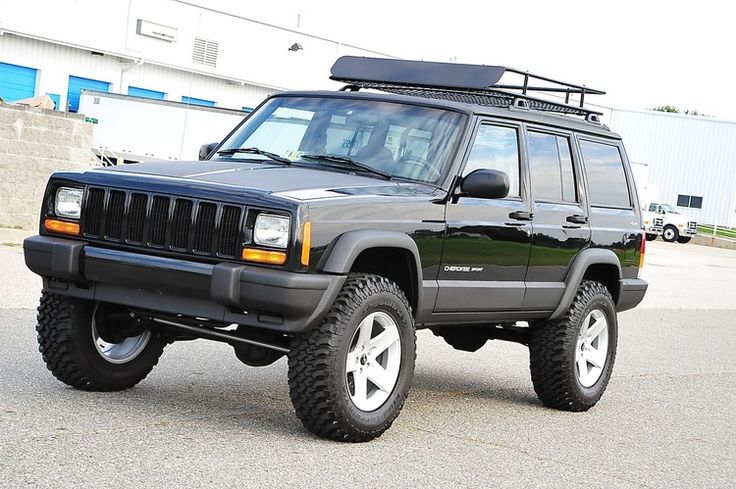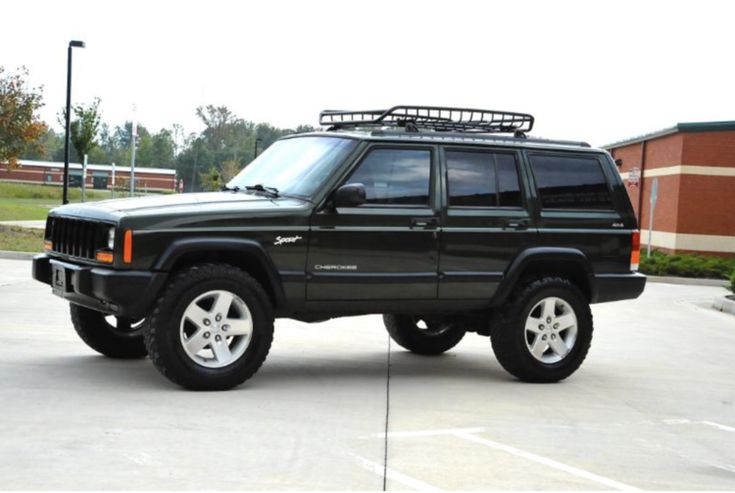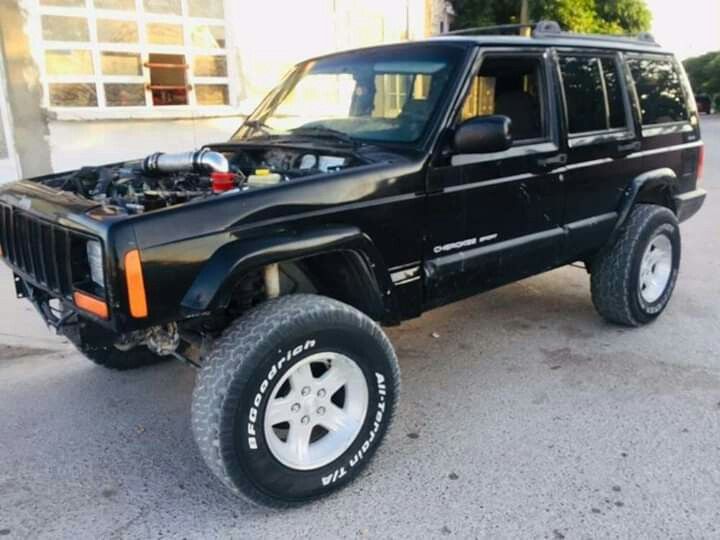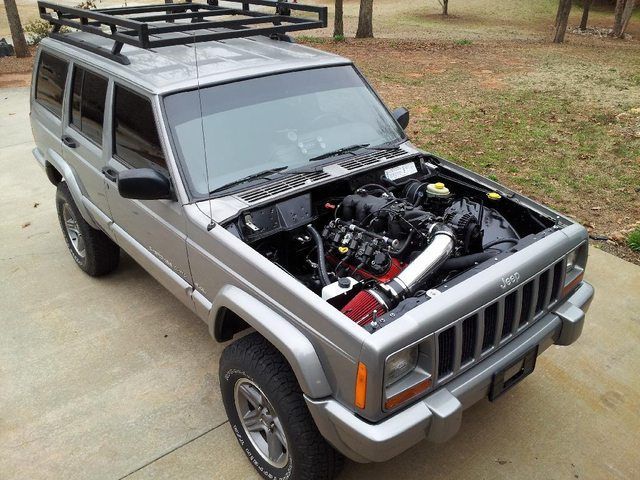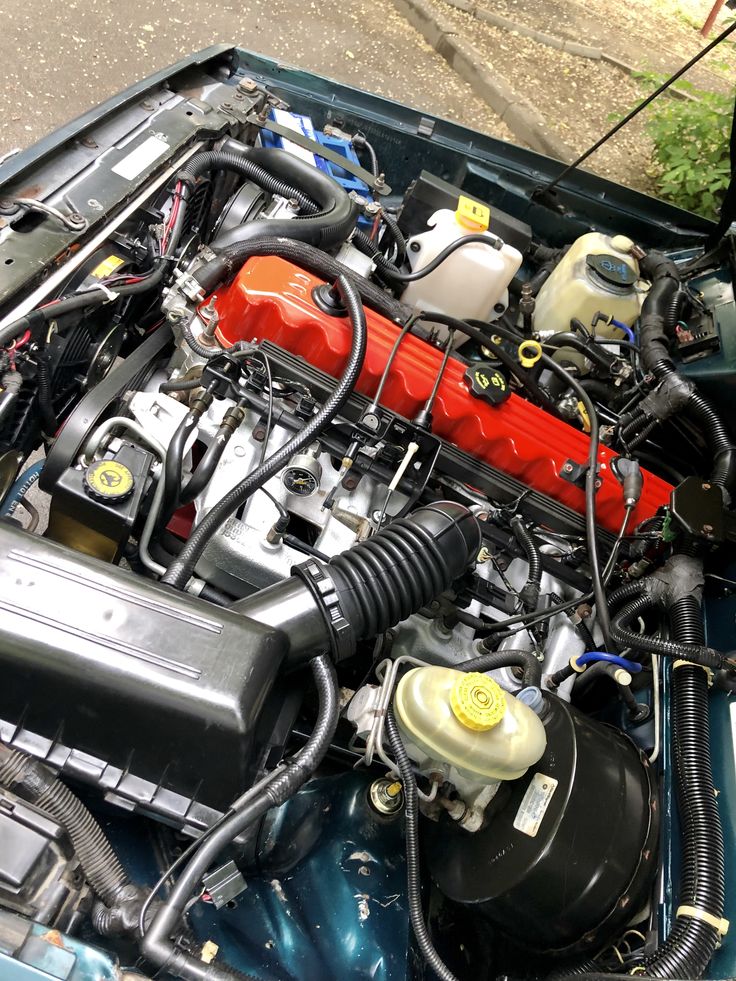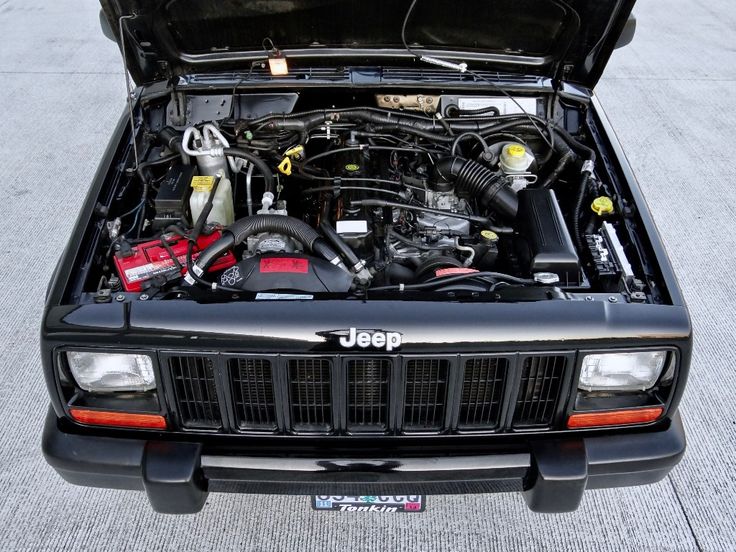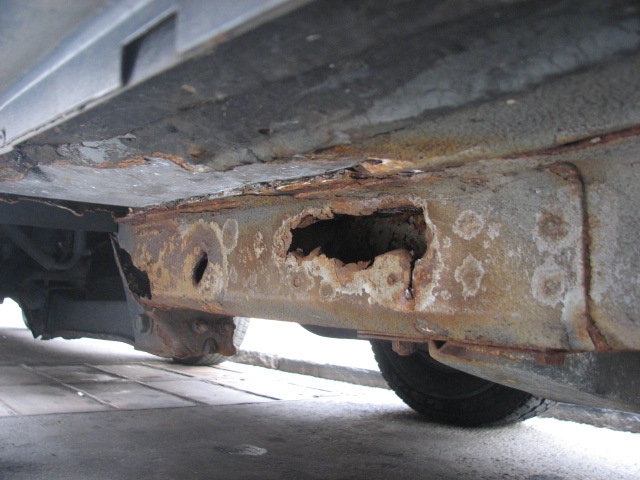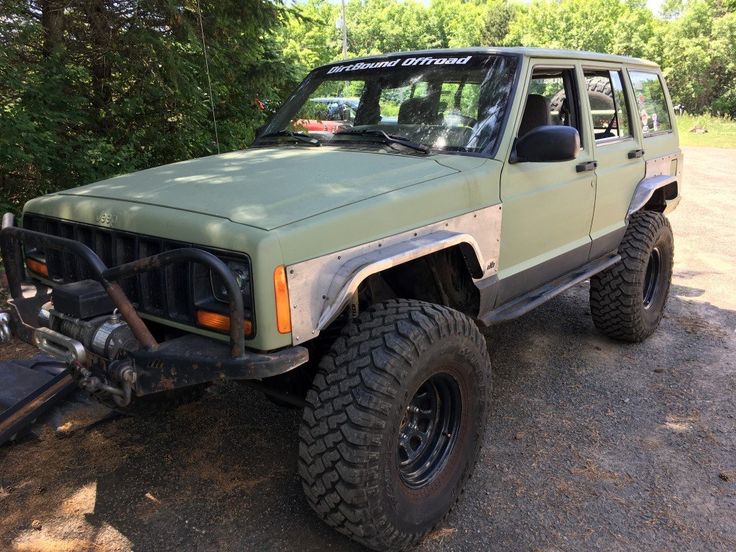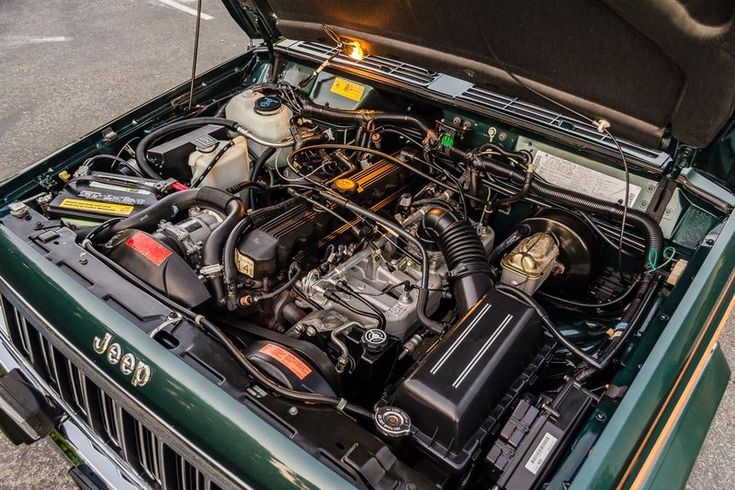This is the Jeep Cherokee XJ buyer guide
If you are looking for a Jeep Cherokee XJ for sale, this guide will help you get one.
The Jeep Cherokee XJ has built a legendary reputation among off-road enthusiasts and daily drivers alike. Whether you’re a first-time buyer or looking to add another XJ to your collection, purchasing the right one requires a blend of research, inspection, and understanding of the vehicle’s quirks. This guide will help you navigate the process, ensuring you find a Jeep Cherokee XJ that meets your expectations.
Why Choose a Jeep Cherokee XJ?
Before diving into the buying process, it’s essential to understand what makes the XJ special:
- Durability: Built between 1984 and 2001, the XJ’s unibody construction is robust yet lightweight.
- 4×4 Prowess: Its off-road capabilities are legendary, thanks to solid axles and a well-engineered drivetrain.
- Affordability: It’s a classic vehicle that’s often budget-friendly.
- Aftermarket Support: A vibrant aftermarket community offers upgrades for nearly every component.
Key considerations before buying an XJ
Research the Model Year and Versions
- 1984-1990: Equipped with the Renix engine management system and a carbureted 2.8L V6, these early models are less desirable unless properly maintained.
- 1991-1996: Switched to Chrysler’s High Output 4.0L inline-six engine—a favorite for its reliability and performance.
- 1997-2001: Benefited from a facelift, improved interiors, and modernized systems. These are the most sought-after years for daily driving and light off-road use.
Understanding the Diesel Variant
While the 4.0L inline-six gasoline engine is renowned for its reliability, the diesel variants, particularly the 2.5L VM Motori engines, have a more complex reputation. Originally designed for marine applications, these Italian-made engines were adapted for automotive use, leading to certain challenges.
Common Issues with the Diesel Engine
- Cylinder Head Problems: The 2.5L VM diesel engine features individual cylinder heads for each cylinder. This design can lead to head gasket failures and cracks, especially under high thermal stress. 4x4Community
- Cooling System Vulnerabilities: The engine’s marine origins mean it was initially designed for consistent cooling environments. In automotive settings, especially in warmer climates, the cooling system can be inadequate, leading to overheating issues.
- Starter Compatibility: There are reports of starter motor issues due to incorrect installations. The 2.5L VM engine can accommodate different starters, and using the wrong one may damage the flywheel’s starter ring.
Assess Common Problems by Mileage
When evaluating a used Jeep Cherokee XJ for sale, it’s essential to understand the common issues that arise at various mileage intervals. Here’s an expanded guide to help you assess potential concerns based on the vehicle’s mileage:
Under 100,000 Miles:
- Routine Maintenance Verification:
- Oil Changes: Ensure that oil changes have been performed at regular intervals, typically every 3,000 to 5,000 miles, to maintain engine health.
- Timing Chain/Belt: While the XJ’s 4.0L inline-six engine utilizes a timing chain known for its durability, it’s prudent to confirm its condition, especially in higher-mileage vehicles.
- Brake Servicing: Inspect the brake pads, rotors, and fluid. Look for signs of wear or recent replacements, indicating attentive maintenance.
- Cooling System Inspection:
- Radiator and Hoses: Check for any signs of leaks, corrosion, or deterioration, as early issues can manifest in the cooling system.
- Thermostat Functionality: Ensure the thermostat operates correctly to prevent overheating.
- Electrical Components:
- Battery Health: Test the battery’s charge and inspect for corrosion on terminals.
- Alternator Output: Verify that the alternator is charging the battery adequately.
100,000 to 200,000 Miles:
- Suspension Components:
- Shocks and Struts: Assess for signs of leaking or diminished damping ability, which can affect ride quality.
- Control Arms and Bushings: Look for cracks, wear, or movement that could lead to alignment issues.
- Steering Linkage:
- Tie Rod Ends and Ball Joints: Check for excessive play or wear, which can compromise steering precision and safety.
- Steering Gearbox: Inspect for leaks or looseness that might indicate impending failure.
- Radiator and Cooling System:
- Radiator Condition: Look for external corrosion or internal clogging that could impede cooling efficiency.
- Water Pump: Listen for bearing noise or signs of leakage from the weep hole, suggesting it’s nearing the end of its service life.
- Transmission Health:
- Fluid Condition: Examine the transmission fluid for discoloration or burnt odor, indicating potential internal issues.
- Shift Quality: During a test drive, note any hesitation, slipping, or harsh engagements between gears.
200,000+ Miles:
- Engine Compression:
- Compression Test: Perform a compression test to assess the health of the engine’s cylinders. Uniform readings across all cylinders indicate good condition, while significant variances can signal internal wear.
- Oil Leaks:
- Rear Main Seal: Inspect the area between the engine and transmission for oil seepage, a common issue in high-mileage XJs.
- Valve Cover Gasket: Look for oil residue around the valve cover, which can drip onto the exhaust manifold, posing a fire hazard.
- Transmission Performance:
- Delayed Engagements: Be alert for delays when shifting from park to drive or reverse, indicating internal wear.
- Unusual Noises: Listen for whining, clunking, or grinding sounds during operation, suggesting potential mechanical problems.
- Differential and Transfer Case:
- Fluid Levels and Condition: Check for metal shavings in the fluid, which can indicate internal component wear.
- Operational Smoothness: Test the 4WD system to ensure it engages and disengages without issue.
Understand Your Climate and Terrain
- Rust-prone areas (Northern regions): Look for corrosion on the unibody frame, rocker panels, and floorboards.
- Off-road use: Check for damage to skid plates, undercarriage, and differential housings.
Vehicle Inspection
Conducting a thorough inspection is crucial when considering a used Jeep Cherokee XJ. Here’s how to assess key components:
1. Engine Assessment
- Visual Inspection:
- Leaks: Look for oil or coolant leaks around the engine bay, particularly near the valve cover, oil pan, and radiator.
- Belts and Hoses: Check for cracks, wear, or signs of aging.
- Operational Checks:
- Startup: Start the engine from cold. Listen for unusual noises like knocking or ticking, which could indicate internal issues.
- Idle Quality: The engine should idle smoothly without fluctuations.
- Exhaust Smoke: Observe the exhaust for excessive smoke, which could indicate burning oil (blue smoke) or coolant (white smoke).
2. Transmission and Transfer Case
- Fluid Inspection:
- Levels and Condition: Check transmission fluid levels. The fluid should be a clear reddish color without a burnt smell.
- Functional Test:
- Shifting: During a test drive, ensure smooth gear transitions without slipping or hesitation.
- 4WD Engagement: Engage both high and low ranges to confirm proper operation.
3. Suspension and Steering
- Physical Inspection:
- Components: Inspect shocks, struts, ball joints, and bushings for wear or damage.
- Alignment: Check for uneven tire wear, which may indicate alignment issues.
- Operational Test:
- Steering Play: With the vehicle stationary, gently turn the steering wheel to assess for excessive play, which could indicate worn components.
- Ride Quality: During the test drive, note any unusual noises or vibrations, especially over bumps.
4. Electrical System
- Component Check:
- Lights: Test all exterior and interior lights for functionality.
- Gauges: Ensure the instrument cluster operates correctly without erratic behavior.
- Accessories: Verify the operation of the radio, power windows, and other electronic features.
- Battery and Alternator:
- Voltage Test: Use a multimeter to check battery voltage (should be around 12.6V when off and 13.7-14.7V when running).
- Charging System: Ensure the alternator maintains proper voltage output.
5. Body and Frame
- Rust Inspection:
- Common Areas: Examine the undercarriage, floor pans, rocker panels, and wheel wells for rust. Use a flashlight and, if possible, a lift to get a comprehensive view.
- Structural Integrity: Press on suspect areas with a screwdriver to check for weakness or perforation.
- Panel Alignment:
- Gaps: Inspect door, hood, and trunk gaps for uniformity, indicating whether the vehicle has been in accidents.
- Operation: Open and close all doors, the hood, and the tailgate to ensure they function smoothly.
Test Drive
- Accelerate and brake to listen for unusual noises.
- Test handling at various speeds.
- Engage the 4WD system on different terrains.
Budgeting for Repairs and Upgrades
Even a well-maintained Jeep Cherokee XJ for sale may require some investment. Here are common costs to consider:
- Suspension Overhaul: $500-$1,500
- Radiator Replacement: $300-$600
- Tire Replacement: $500-$1,000
- Rust Repairs: $200-$2,000 (depending on severity)
- Lift Kit Installation (optional): $1,000-$3,000
- Drivetrain Repairs: $1,000-$2,500
Where to Find a Jeep Cherokee XJ for sale
1. Local Classifieds and Online Marketplaces
- Websites like Craigslist, Facebook Marketplace, and eBay Motors often feature local sellers.
- Search terms: “Jeep Cherokee for sale,” “Jeep Cherokee for sale near me.”
2. Specialty Forums and Groups
- Platforms like JeepForum, CherokeeForum, and Reddit’s r/XJ can help connect you with enthusiasts selling their vehicles.
3. Dealerships
- While rare, some dealerships may carry older models as trade-ins.
4. Auctions
- Explore government or private auctions, often listing used fleet vehicles.
Consider Davis Autosports for a Spectacular Jeep Cherokee XJ for sale if You have a $40K+ Budget
If you’re eager to own a fully restored and upgraded Jeep Cherokee XJ without the wait, Davis Autosports is the perfect option. With a $40K+ budget, you can enjoy a breathtaking classic Jeep that’s been meticulously restored to like-new condition, blending modern reliability with timeless style. Their XJs are ready to hit the road or trail, offering premium craftsmanship for enthusiasts who want the best without compromise. They normally have couple of Jeep Cherokee XJ for sale in their inventory
Restoring the Jeep Cherokee XJ to Perfection
If you’re in the market for a Jeep Cherokee XJ that combines classic charm with modern reliability, look no further than Davis Autosports. This highly regarded restoration shop specializes in breathing new life into the iconic XJ, transforming high-mileage or worn vehicles into pristine examples that look and drive like they just rolled off the factory floor.
What Makes Davis Autosports Unique?
- Meticulous Restorations:
- Every Davis Autosports Cherokee XJ undergoes a comprehensive restoration process. They address both the mechanical and cosmetic aspects, ensuring that each vehicle meets the highest standards of quality.
- From engine rebuilds to flawless paint jobs, they leave no detail overlooked.
- Custom Upgrades:
- Whether you want a rugged off-road-ready XJ or a luxurious daily driver, Davis Autosports can make it happen. They offer customizations such as:
- Lift kits and all-terrain tires.
- Upgraded suspension systems.
- Modern interior features like premium upholstery, infotainment systems, and LED lighting.
- Whether you want a rugged off-road-ready XJ or a luxurious daily driver, Davis Autosports can make it happen. They offer customizations such as:
- Modernized Classics:
- While staying true to the XJ’s classic design, Davis Autosports incorporates modern technology to enhance safety, comfort, and performance. This makes their restored XJs an excellent choice for enthusiasts who want the best of both worlds.
Why Consider a Restored XJ from Davis Autosports?
Purchasing a restored XJ from Davis Autosports is like owning a piece of history, reimagined for modern adventures. Their vehicles not only retain the rugged DNA of the original XJ but also provide the reliability and functionality to meet today’s driving demands.
Whether you’re a collector or someone who simply loves the timeless appeal of the Jeep Cherokee XJ, a restored vehicle from Davis Autosports offers unmatched craftsmanship and attention to detail.
How to Find Davis Autosports Vehicles
You can explore their available inventory and learn more about their restoration process directly on their website. They frequently have fully restored and customized XJs ready for sale, so keep an eye out for your dream build!
What If I Am Not a Vehicle Expert or Mechanic? What Should I Do?
If you’re not a vehicle expert or mechanic, buying a used Jeep Cherokee XJ can still be a smooth and successful process. Here are steps to ensure you make an informed decision:
1. Hire a Professional Mechanic
- Pre-Purchase Inspection: Hire a trusted mechanic to conduct a thorough inspection of the vehicle. This typically costs $100-$200 but can save you from costly surprises.
- Specialized Experience: Look for mechanics familiar with Jeep vehicles or off-road models. They’ll know where to check for common XJ-specific issues, like rust-prone areas or suspension wear.
2. Use Mobile Inspection Services
- Convenient Options: Companies like LemonSquad or YourMechanic offer mobile inspection services, sending a professional to evaluate the vehicle at its location.
- Comprehensive Reports: These services provide detailed reports with photos and repair estimates, helping you make an informed choice even if you’re not present.
3. Ask the Seller for Maintenance Records
- Review Service History: Request maintenance records from the seller to verify the vehicle has been cared for properly.
- Red Flags: Look for gaps in maintenance, major repairs that could indicate recurring issues, or a lack of documentation entirely.
4. Use Online Resources
- Forums and Communities: Join forums like JeepForum, CherokeeForum, or Reddit’s r/XJ. These communities can provide advice on what to look for and answer your questions.
- Tutorials and Guides: Watch YouTube videos or read blogs that guide buyers through inspections, such as checking for rust or testing the 4WD system.
5. Take a Friend or Family Member
- Second Pair of Eyes: Bring someone who knows more about vehicles or has experience buying used cars.
- Ask Questions: They can help you ask the seller specific questions or spot issues you might miss.
6. Rely on Vehicle History Reports
- Services Like Carfax: These reports can reveal prior accidents, title issues, or odometer discrepancies.
- Inspection Guidance: Use the report to focus your inspection on potential problem areas, like previous damage or repairs.
7. Negotiate for Professional Repairs
- Seller-Handled Repairs: If you identify issues but aren’t confident handling them yourself, negotiate with the seller to have the repairs completed before purchase.
- Price Adjustment: Alternatively, use repair costs to lower the purchase price and have the work done by a professional after the sale.
8. Consider a Certified Pre-Owned Vehicle
- Peace of Mind: While rare, some dealerships may offer certified pre-owned Jeep Cherokee XJs, which come with inspections and warranties.
- Simpler Process: This eliminates the need for extensive inspections on your part.
Trust Your Instincts
- If something feels off about the vehicle or the seller’s responses, don’t hesitate to walk away. There are many XJs available, and it’s worth waiting for one that feels right.
By taking these steps, even non-experts can confidently purchase a Jeep Cherokee XJ without fear of hidden issues.
What If the Seller Hides Issues?
When purchasing a Jeep Cherokee XJ, dealing with a seller who hides issues can be challenging. Whether intentional or unintentional, hidden problems can lead to costly surprises. Here’s how to protect yourself during the buying process and address any issues that arise later.
1. Take Precautions Before Buying
To reduce the risk of hidden problems with your Jeep Cherokee XJ:
- Hire a Mechanic for a Pre-Purchase Inspection: A professional inspection can uncover issues the seller may not mention, such as rust, oil leaks, or suspension wear.
- Ask for a Vehicle History Report: Services like Carfax or AutoCheck can reveal past accidents, flood damage, and odometer tampering.
- Test Drive Thoroughly: Ensure you test all aspects of the XJ, including the engine performance, brakes, suspension, and 4WD system. Pay close attention to unusual noises or vibrations.
- Request Documentation: Ask the seller for maintenance records and repair receipts to verify claims about the vehicle’s condition.
- Ask Specific Questions: For example:
- “Has this Jeep Cherokee XJ ever been in an accident?”
- “Are there any current mechanical or electrical issues?”
- “How extensively has it been used off-road?”
- Use Written Agreements: If possible, request the seller to confirm, in writing, the vehicle’s current condition, especially regarding any claims they make.
2. Spot Potential Red Flags
During your evaluation of the Jeep Cherokee XJ, watch for signs that the seller may be hiding issues:
- Rushed Sales Process: Sellers eager to finalize a deal quickly may have something to hide.
- Refusal to Allow an Inspection: If the seller won’t let a mechanic evaluate the vehicle, this is a red flag.
- Inconsistent Answers: Pay attention to conflicting or vague responses when you ask about the vehicle’s history or condition.
3. After the Purchase: Addressing Hidden Issues
If you discover problems with your Jeep Cherokee XJ after the sale, take these steps:
- Assess the Issue: Have a trusted mechanic examine the problem to determine the extent and cost of repairs.
- Contact the Seller: Politely reach out to the seller and provide evidence (e.g., inspection reports or photos). Request reimbursement for repairs or a partial refund.
- Legal Recourse: Depending on the circumstances:
- Private Sale: Most private sales are “as-is,” but you may have legal grounds if the seller made false claims or concealed major issues.
- Dealer Sale: Dealers are typically required to disclose known issues. File a complaint with a consumer protection agency or pursue legal action if necessary.
4. Tools to Detect Hidden Problems Before Buying
Use these tools and techniques to identify concealed issues when evaluating a Jeep Cherokee XJ for sale:
Inspect Under Carpets and Mats: Hidden rust or water damage often lurks beneath the interior flooring.
OBD-II Scanner: Plug in an affordable OBD-II scanner to check for engine error codes that may not trigger a dashboard light.
Magnet Test: Use a magnet to detect body filler, which might indicate past repairs from rust or accidents.
Trust Your Instincts
When evaluating a Jeep Cherokee XJ, trust your gut. If something feels off—whether it’s the seller’s behavior, inconsistencies in the vehicle’s condition, or the deal being too good to be true—walk away. There are many Jeep Cherokee XJs for sale, and it’s better to wait for the right one than to regret your purchase.
How to Negotiate Price Based on Issues
Negotiating the price of a Jeep Cherokee XJ (or any used vehicle) based on identified issues is an essential part of the buying process. Here’s a step-by-step guide to help you get the best deal:
1. Do Your Homework
- Market Research: Before negotiations, research the market value of similar Jeep Cherokee XJ models in your area. Use platforms like Kelley Blue Book, Edmunds, or online marketplaces (e.g., Craigslist, Facebook Marketplace) to establish a price range.
- Factor in Mileage and Condition: Consider the model year, mileage, modifications, and overall condition when comparing prices.
- Identify Key Issues: List all problems you found during the inspection or test drive.
2. Prioritize Repairs
Focus on significant issues that impact safety, drivability, or long-term reliability. Examples include:
- Rust or Structural Damage: Highlight the cost and labor involved in rust repairs, especially if the frame or unibody structure is compromised.
- Mechanical Failures: Issues like engine leaks, transmission problems, or suspension wear can be expensive to fix and are strong negotiation points.
- Deferred Maintenance: Point out neglected routine maintenance (e.g., overdue oil changes, worn brake pads) that could lead to further problems.
3. Use Repair Costs as Leverage
Obtain repair estimates for the identified issues:
- Get Professional Quotes: If possible, bring the vehicle to a mechanic or use online resources to estimate repair costs.
- Highlight Expensive Repairs: Focus on costly issues, such as engine rebuilds ($2,000-$4,000), transmission overhauls ($1,000-$2,500), or rust repair ($1,000-$2,000).
- Break Down Costs: Present the seller with a breakdown of the necessary repairs and associated expenses.
4. Present Your Offer
When making an offer:
- Start Low: Begin negotiations below your maximum budget, allowing room to meet in the middle.
- Explain Your Reasoning: Justify your lower offer by clearly outlining the issues and repair costs. For example:
- “The vehicle has visible rust on the rocker panels and undercarriage, which could cost $1,500 to repair. Considering this, I’m offering $X.”
- “The rear main seal is leaking, and I’ll need to spend $1,000-$1,500 to fix it. Would you consider $Y?”
- Be Polite but Firm: Stay respectful and professional during discussions.
5. Use Comparisons
Mention other listings or sales:
- Comparable Vehicles: Reference similar XJs in better condition or at lower prices.
- Market Value: If the asking price exceeds the average value for its condition, point this out during negotiations.
6. Ask for Additional Discounts
If the seller is unwilling to lower the price significantly:
- Request Extras: Ask if they are willing to include spare parts, tools, or accessories (e.g., off-road gear or maintenance records) as part of the deal.
- Split the Difference: Offer to meet halfway between your counteroffer and their asking price to show compromise.
7. Be Ready to Walk Away
- Stick to Your Budget: If the seller refuses to budge and the price exceeds what you’re willing to pay, politely walk away. There are always other options available.
- Follow Up: Sellers may reconsider your offer after additional time or failed attempts to sell.
Example Negotiation Scenario
Asking Price: $5,000
Inspection Findings: Rust in wheel wells ($800 repair), leaking valve cover gasket ($300 repair), and worn shocks ($500 repair).
Repair Total: ~$1,600
Negotiation Tactics:
- Offer $3,400, citing the estimated $1,600 repair cost.
- Explain your logic and reference other listings with fewer issues.
- Settle for $3,800-$4,000 if the seller is firm.
By carefully evaluating the XJ’s condition, presenting your case clearly, and staying confident, you can negotiate a fair price and make the most of your investment.
Jeep Cherokee JX owners reviews
The Jeep Cherokee XJ, produced from 1984 to 2001, has garnered a diverse range of owner experiences. Here’s a compilation of real reviews from XJ owners, highlighting both strengths and areas of concern:
Positive Experiences:
- Off-Road Capability: Many owners praise the XJ’s performance in off-road conditions. One owner remarked, “It’s stock everything and will go places that you wouldn’t even believe are possible.” Jeep Reviews
- Reliability: Several owners report long-term reliability. For instance, an owner from Mexico stated, “Es un vehículo excelente, muy confiable. Desde que lo compré, en 1998, es la primera falla seria que presenta.” Opinautos
- Engine Performance: The 4.0L inline-six engine receives frequent commendations for its power and durability. An owner noted, “It’s the most powerful vehicle I’ve ever owned.” Jeep Reviews
Areas of Concern:
- Fuel Consumption: Some owners mention higher fuel consumption as a drawback. A Venezuelan owner commented, “Lo peor: el consumo de gasolina.” Opinautos
- Rust Issues: Particularly in older models, rust can be a problem. An owner from Wisconsin described their XJ as a “rust bucket,” though still appreciated its performance. Jeep Reviews
- Maintenance Needs: While many find the XJ easy to work on, some report frequent maintenance requirements. An owner shared, “My ’95 that I had for 1.5 years, needed constant work (power steering, axles, u-joints, t-case, trans, you name it).” Foro Jeep
Model Year Considerations:
- 2000-2001 Models: Some owners advise caution with these years due to potential issues like the “0331 head cracking problem.” One owner mentioned, “Stay away from the 2000 – 2001 models, they had the ‘0331 head cracking problem’ and if not treated right away it cause serious engine failure/problems.” Foro Jeep
Overall Sentiment:
Despite certain concerns, the general consensus among owners is positive, emphasizing the XJ’s durability, off-road prowess, and the strong community of enthusiasts supporting it. When considering a Jeep Cherokee XJ, it’s essential to weigh these firsthand accounts, conduct a thorough inspection, and ensure any potential issues are addressed to enjoy a rewarding ownership experience.
Frequently Asked Questions (FAQ)
1. What’s the best engine option for the XJ?
- The 4.0L inline-six is considered the best for reliability and performance.
2. Are manual or automatic transmissions better?
- It depends on preference. Manuals offer better control off-road, while automatics are easier for daily driving.
3. What should I look for during the test drive?
- Listen for unusual noises such as clunks or rattles, especially from the suspension or drivetrain.
- Ensure the transmission shifts smoothly and the steering responds precisely.
- Test the 4WD system by engaging both high and low ranges on appropriate terrain.
4. How much should I budget for rust repairs?
- Rust repair costs vary based on severity:
- Surface rust: $200-$500 for sanding and repainting.
- Structural rust: $1,000-$2,000 or more, depending on the extent of damage and labor required.
5. What is the cost of rebuilding the engine?
- A complete engine rebuild for the 4.0L inline-six typically costs between $2,000 and $4,000, depending on parts and labor.
- Diesel engines may cost more due to the complexity of sourcing specific parts.
6. What should I do if I find leaks during the inspection?
- Identify the source of the leak (e.g., valve cover gasket, rear main seal, or radiator).
- Use the leak as a negotiation point to lower the vehicle’s price.
- Plan for repair costs:
- Valve cover gasket replacement: $100-$300
- Radiator replacement: $300-$600
- Rear main seal repair: $800-$1,500 (labor-intensive).
7. How do I estimate the cost of suspension repairs?
- Common components and their costs:
- Shocks/struts: $200-$500 (for all four corners).
- Control arm bushings: $150-$300.
- Ball joints: $300-$600.
- Use inspection results to determine which parts need immediate replacement.
8. Is it better to buy a stock XJ or a modified one?
- Stock XJs are often preferred for restoration projects, as they haven’t been subjected to heavy off-road use.
- Modified XJs may have upgrades but could also show signs of wear from rigorous use. Inspect carefully.
9. How can I verify the vehicle’s maintenance history?
- Ask for service records and receipts from the seller.
- Look for consistent oil change intervals and documented repairs.
- Inspect for signs of recent maintenance, such as new parts or fresh fluids.
10. What are common hidden issues to watch for?
- Rust under carpets or in hidden areas of the undercarriage.
- Cracks in the cylinder head of 2000-2001 models (prone to the “0331 head” issue).
- Worn motor mounts causing excessive vibration.
11. What should I prioritize if I’m on a budget?
- Address safety-critical repairs first:
- Brakes, suspension, and steering components.
- Plan cosmetic or performance upgrades after ensuring the vehicle’s mechanical integrity.
12. How do I know if the price is fair?
- Compare listings on online marketplaces and forums.
- Adjust for the vehicle’s condition, mileage, and included upgrades.
- Use price guides like Kelley Blue Book or Edmunds as references.
13. What is a fair price for a used Cherokee XJ?
- Prices range from $2,000 for a project vehicle to $10,000+ for a well-maintained or restored model.
14. Are parts still available for the XJ?
- Yes, thanks to strong aftermarket support and parts compatibility with other Jeep models.
Final Thoughts
Purchasing a Jeep Cherokee XJ is more than just acquiring a vehicle—it’s about joining a passionate community and embracing an iconic piece of automotive history. While the XJ offers unmatched versatility and off-road capabilities, ensuring you buy the right one requires diligence, thorough inspections, and an understanding of its potential restoration needs.
By carefully assessing the vehicle’s condition, verifying its maintenance history, and budgeting for necessary repairs, you can make a confident and informed purchase. Whether you’re planning to use your XJ for rugged adventures or as a reliable daily driver, the effort you invest upfront will pay off in the long run.
Remember, the Jeep Cherokee XJ is as much about the journey as it is about the destination. With proper care and a touch of personalization, your XJ can become a faithful companion for years to come. Happy trails!
After you buy one you may check the following article:
